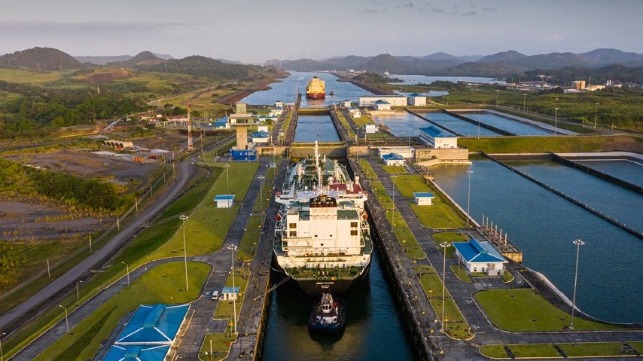Record LNG Transits as Vessels Wait for Slots at Panama Canal

The Panama Canal set a new monthly record for transits and tonnage of liquefied natural gas (LNG) vessels in January, in part due to the recent surge in the energy market. Strong demand for LNG shipments from Asia was driving the record shipments and also contributing to prolonged delays for gas carriers to transit the canal.
According to data released from the Panama Canal Authority, a total of 58 LNG vessels transited through the Neopanamax Locks, totaling 6.74 million Panama Canal tons during January. The previous monthly records were set in January 2020 with 54 transits and in November 2020 with 6.23 million PC/UMS.
"These achievements reaffirm the Canal's ability to adapt and guarantee our competitiveness and reliability to capture the opportunities presented by market changes, including the liquefied natural gas segment," said Panama Canal Administrator, Ricaurte Vásquez Morales.
At the end of 2020, delays at the Panama Canal was contributing to LNG supply constraints just as demand was increasing from Asia. Analysts cited the delays at the canal as one of the key factors contributing to the record high prices for the gas.
The Panama Canal responded to the reports of waits for transits lasting up to two weeks by implemented adjustments in its processes for obtaining transit slots. The goal was to provide additional opportunities for the LNG carriers to reduce the prolonged waiting times. In January, they added a second slot to the advance reservation system and also modified the Transit Reservation Booking System, allowing any slot that becomes available for Neopanamax vessels within 96 hours of a transit to be offered through an auction process.
Since the modifications, the canal reports it has conducted 25 auctions, of which nine have been awarded to LNG vessels. The canal was able to transit three northbound LNG vessels in one day, on January 25, and four LNG ships, two northbound and two southbound, in one day on January 31.
The actions helped to reduce the waiting time cutting it in half for some vessels to one week. However, the research firm Energy Aspects told Reuters that around one-third of LNG vessels loading from the United States in December opted to take a long route around Africa and across the Indian Ocean. Some analysts were suggesting that ships might opt for the Suez Canal as an alternative route, but they did not expect the backlog to ease until spring when demand for LNG shipments is expected to return to historical levels.
